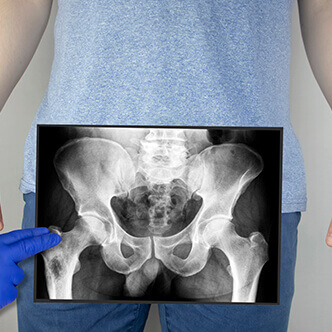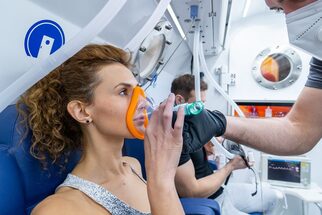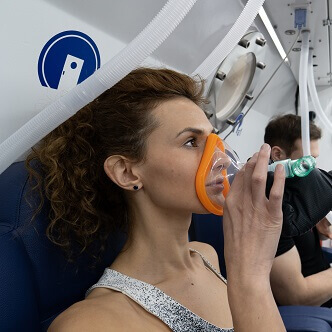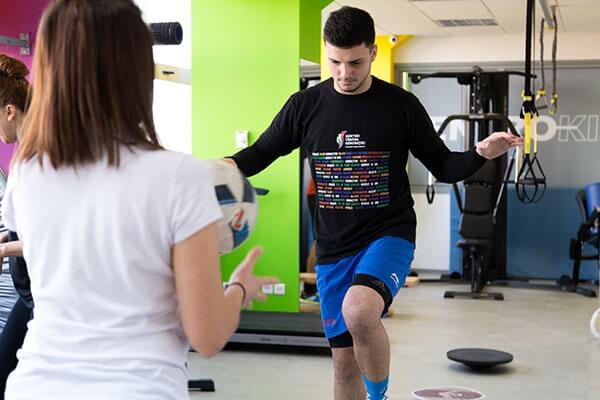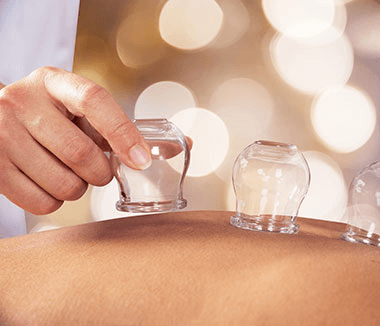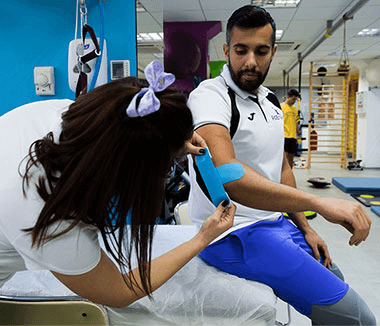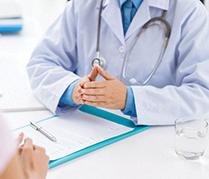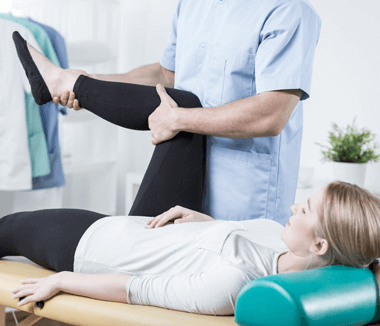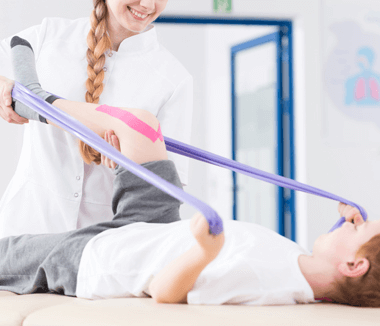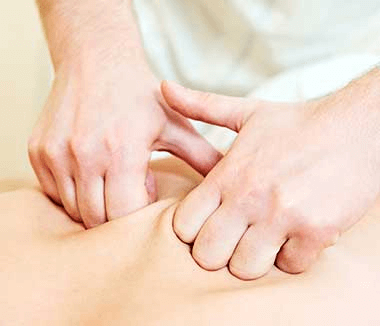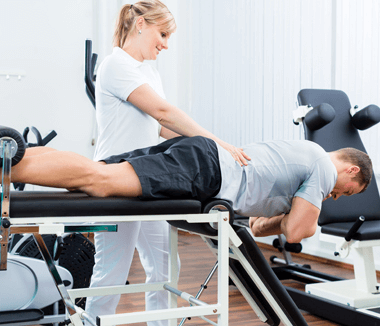See details
READ MORE.jpg)
What awaits you at Centrokinetic?
Centrokinetic welcomes patients, having a complete rheumatology department, a medical branch that deals with the diagnosis, treatment, and recovery of patients with non-surgical musculoskeletal disorders. These conditions are usually painful, acute, or, most often, chronic, preventing the proper functioning of the musculoskeletal system. They are generally called rheumatism or rheumatic and musculoskeletal diseases.
Most of the times, the patient's evaluation is complex, multidisciplinary, considering the systemic, generalized character of most rheumatological diseases, that is why Centrokinetic has experienced doctors:
- Rheumatologists: Dr. Alizzi Khalid and Dr. Oana Olteanu.
- Medical rehabilitation doctors: Dr. Tache Georgiana, Dr. Edis Mustafa, Dr. Matei Adina, Dr. Czego Renata.
- Orthopedic doctors: Dr. Andrei Bogdan, Dr. Vlad Gican and Dr. Crintea Alexandru
- Radiologists: Dr. Pantu Cosmin and Dr. Ghiea Sorin
- Neurologists: Dr. Rotaru Bogdan, Dr. Simona Man and Dr. Simion Laurentiu
- Doctor of nutrition and metabolism diseases: Dr. Elian Viviana
What is systemic sclerosis?
Systemic sclerosis is an autoimmune inflammatory disease that leads to potential widespread fibrosis and vascular abnormalities that can affect the skin, lungs, gastrointestinal tract, heart, and kidneys. The skin becomes thick and rigid (sclerotic).
According to the skin distribution situation, we divided systemic sclerosis into two main subcategories:
- Diffuse systemic cutaneous sclerosis
- Limited systemic cutaneous sclerosis, formerly known as CREST syndrome to show key features: calcinosis (formation of calcium deposits in soft tissues), Raynaud’s syndrome, esophageal dysmotility, sclerodactyly. telangiectasia
We often use the general term scleroderma for both morphea (located in the scleroderm) and systemic sclerosis (systemic scleroderma). It is very important to distinguish these two diseases because they can vary and it is necessary to treat them differently.
The clinical picture of systemic sclerosis
- Thickening of the skin on the fingers and toes (sclerodactyly)
- Specific antibodies in the blood (anti-Scl70 or others)
- Abnormal nail folding
- Internal fibrosis of organs and/or vascular destruction (involving the lungs, heart, gastrointestinal tract, or lungs).
Systemic sclerosis is rare, with a percentage ranging from 30 to 500 cases per million.
- It is 5 times more common in women compared to men
- All races and ethnicities may be affected, but the percentages appear to be higher in some American and black races and less so in the Asian region.
- The predisposed age for systemic sclerosis varies approximately between 35 and 55 years. It also occurs at a young age but is rarer compared to adults
Systemic sclerosis is an autoimmune disease characterized by inflammation, fibrosis, and vasculopathy.
The mechanism of production is complex and remains quite unknown. Genetic predisposition plus a triggering event leads to a cascade of innate and adaptive immunoinflammatory responses.
Genetic predisposition
- First-degree relatives of affected people may have 10-16 times higher risk of developing systemic sclerosis.
- Studies have identified sites associated with systemic sclerosis
- Clinical subtypes map to a specific genetic subset
- Differences in gene expression occur in fibroblasts, immune (T and B), endothelial, smooth muscles, and epithelial cells
Systemic sclerosis has been associated with lesions, exposure to silicon, vinyl chloride monomer, chlorinated solvents, trichloroethylene, welding fumes, aromatic solvents, ketones, bleomycin, and other drugs (vitamin K, cocaine, penicillamine, appetite suppressants, and some chemotherapeutic agents).
Clinical features of systemic sclerosis
We relate the clinical features of systemic sclerosis to the support of inflammatory and fibrotic diseases. Constitutional systems have in common symptoms such as fatigue, arthralgia and myalgia.
Skin characteristics of systemic sclerosis
- Skin sclerosis
- Skin Fibrosis defines diffuse systemic sclerosis against limited systemic sclerosis
- Sclerodactyly: thickening and tightening of the skin of the fingers (toes). It can be spindle-shaped
Hands
- Swollen fingers: early inflammatory phase of the disease
- Raynaud’s syndrome
- Abnormal capillaries of the nail folds
- Palmar erythema that affects thenar/hypothenar eminence
- Smaller, fragile nails with ragged cuticles
- Digital scars
- Digital ulcers
- Ulceration can lead to dry gangrene and eventual loss of fingertips (such as frostbite).
Face
- Matt telangiectasias on the face, chest, palms
- Peri-oral frown (fat loss)
- Microstomy (limited oral opening defined as interlabial distance <4.5 cm)
- Nose with beak
Other
- Calcinosis that affect the fingers, the extensor surfaces of the limbs. The skin can decompose and discharge calcareous material (calcium)
- Salt and pepper depigmentation (hyperpigmentation and hypopigmentation)
- Pruritus
Gastrointestinal symptoms
- Gastroesophageal reflux/heartburn
- Disepsie
- dysphagia
- Early satiety
- Micro-aspiration (speeds up lung disease)
- Ballooning, distension
- Nausea, vomiting
- Pain
- Diarrhea alternating with constipation
- Incontinence (anorectal sphincter insufficiency)
Cardiopulmonary symptoms
- Interstitial lung disease
- Pulmonary hypertension
- Cardiac scleroderma (conductive cardiomyopathy)
- - Difficulty breathing
- - Low effort tolerance
- - Chest pain
- - Palpitations
Kidney disease - Kidney scleroderma
- Proteinuria
- Hypertension
- Renal insufficiency
Other symptoms
- Fatigue
- Sicca symptom (dry eyes, dry mouth) and Sjogren's syndrome
- Musculoskeletal symptoms: rubbing of the atria and tendons, especially the knees, joint pain, deficit and limited movement resulting in contractions
- Ocular symptoms: tight eyelids, low tear secretion, retinopathy
At Centrokinetic, our doctors will perform a complete vascular and nervous clinical examination of the affected limb. The diagnosis of systemic sclerosis is confirmed when key features are present:
- sclerodactyly
- Abnormal nails bend the capillaries at capillaroscopy / dermatoscopy
- Specific autoantibodies (especially anti-Scl70 antibody or anticentromers)
- Fibrosis of internal organs and vascular lesions
Investigations recommended by our doctors may include:
- Other blood tests: anemia, increased sedimentation rate (ESR) and C-reactive protein (CRP), positive rheumatoid factor, increased globulin range (hypergammaglobulinemia), and abnormal coagulation tests may be present.
- Skin biopsy: Excessive soil substance and strange-looking endothelial cells in the dermis, and later, collagen deposits. The epidermis is usually atrophic (thinned)
- Lung function tests
- High-resolution CT scan
- echocardiogram
- Right heart catheterization
- ECG
- Cardiac MRI
- Swallowed barium, manometry
- Endoscopy with gastrointestinal biopsy
Our medical team will come in addition to the investigations to establish a correct diagnosis, with imaging investigations (musculoskeletal ultrasound, joint MRI), functional tests (electromyography), and arthrocentesis. Discover the open MRI imaging center in our clinic. Centrokinetic has a state-of-the-art MRI machine, dedicated to musculoskeletal conditions, in the upper and lower limbs. The MRI machine is open so that people suffering from claustrophobia can do this investigation. The examination duration is, on average, 20 minutes.
Treatment
Treatments help with symptoms and can change the outcome of the disease, especially at the beginning of the course. It focuses on suppressing inflammation and dilating abnormal / narrowed blood vessels. Some newer treatments target specific immune pathways and signaling molecules.
General advice of our doctors:
- It is essential that smokers quit smoking
- Avoid vasoconstrictive medications such as decongestants, amphetamines, ergotamine
The treatment is complex and includes: systemic therapies, vasodilators, treatment of skin manifestations, general measures such as keeping warm, stretching exercises for the joints to reduce the risk of worsening contractures and microstomia, and specific physiotherapy can be beneficial, ulcer prophylaxis and treatment, gastrointestinal and renal disorders treatment.
There is no cure for systemic sclerosis. Survival is determined by the subgroup of the disease and the manifestations of the internal organs. Lung disease and pulmonary hypertension account for almost 2/3 of deaths related to systemic sclerosis.
The proactive and routine annual examination allows for early intervention with drugs that change the disease. In recent years this has led to improved forecasts and long-term results.
About Centrokinetic
Centrokinetic clinic offers all services necessary for a complete rehabilitation process, from the first consultation to the medical specialist to establish the correct diagnosis, to treatment and recovery.
Centrokinetic is the place where you will find clear answers and solutions for your motricity problems. The clinic is dedicated to osteoarticular conditions and is divided into the following departments:
- Orthopedics, a department composed of an extremely experienced team of orthopedic doctors, led by Dr. Andrei Ioan Bogdan, primary care physician in orthopedics-traumatology, with surgical activity at Medlife Orthopedic Hospital, specialized in sports traumatology and ankle and foot surgery.
- Pediatric orthopedics, where children's sports conditions are treated (ligament and meniscus injuries), spinal deformities (scoliosis, kyphosis, hyperlordosis) and those of the feet (hallux valgus, hallux rigidus, equine larynx, flat valgus, hollow foot).
- Neurology, which has an ultra-performing department, where consultations, electroencephalograms (EEG) and electromyography (EMG) are performed.
- Medical recovery for adults and children, department specialized in the recovery of performance athletes, in spinal disorders, in the recovery of children with neurological and traumatic diseases. Our experience is extremely rich, treating over 5000 performance athletes.
- Medical imaging, the clinic being equipped with ultrasound and MRI, high-performance devices dedicated to musculoskeletal disorders, and complemented by an experienced team of radiologists: Dr. Sorin Ghiea and Dr. Cosmin Pantu, specialized in musculoskeletal imaging.
Find the latest news by following the Facebook, Instagram and YouTube accounts of the Centrokinetic clinic.
Recovery in pelvic disorders
Centrokinetic introduces the patients to the first concept in the recovery of pelvic disorders branch in Romania, Find out more about the investigation and the treatments available in this department.
READ MORERecovery from COVID-19
After healing of COVID-19, patients must make significant efforts to quickly return to everyday life. To meet these needs, Centrokinetic clinic created a program called "Recovery from COVID-19 infection."
READ MOREHyperbaric oxygen therapy
Hyperbaric therapy is a form of medical treatment that involves exposing the body to pure oxygen at a higher pressure than normal. There are about 45 diseases approved worldwide to be treated with hyperbaric oxygen.
READ MORERehabilitation in osteoporosis
Centrokinetic has modern equipment for the treatment of osteoporosis: the Galileo vibration platform. The Galileo principle is based on the natural movement of human gait.
READ MOREONCOLOGICAL REHABILITATION
Centrokinetic has a department that is specialized in the rehabilitation of oncologic patients. Physiokinetotherapy has a major contribution in increasing the life quality of oncologic patients, during and after disease.
READ MORENeurorehabilitation in Bucharest
Discover Centrokinetic's new Department dedicated to Neurological Conditions, where patients are offered complex services of neurological medical recovery.
READ MORECupping Therapy
With the help of suction cups, the skin, tissue and muscles are pulled up to increase circulation in the targeted areas and to provide pain management. Find out more about this treatment used today by internationally recognized athletes.
READ MOREPHYSICAL THERAPY
Depending on the problem, our physical therapists will use one of the 7 types of physical therapy, created on the basis of famous recovery protocols. Medical recovery for a broad spectrum of diseases, from chronic musculoskeletal diseases and post-traumatic recovery to orthopedic or neurosurgical post-surgery recovery. The programs are created by the clinic's doctors and include custom physical exercises, modern physiotherapy procedures, articular infiltrations. Click on the images and on the “See details” button for more information.
READ MOREPhysiotherapy and Physiokinetotherapy
Through physiotherapy we can treat almost any disease that affects the muscles, nerves or joints. Any procedure that takes place in our clinic starts with a medical examination followed by a diagnosis and recovery therapy program, adapted to every patient and affection, for the best results. For clients who buy any physiokinetotherapy package, the consultation is free.
READ MORETHERAPEUTIC MASSAGE
A combination of relaxation massage and remedial massage, the therapeutic message is necessary in order to relax muscles, improve muscle tone and flexibility.
READ MOREKINESIO TAPING ROCKFORD
The application of the kinesiological bands directly stimulates the peripheral and lymphatic circulatory system, and indirectly, the muscular and neurological systems.
READ MOREMANUAL THERAPY
Manual therapy restores the mobility of rigid joints and reduces muscle tension, to return the patient to the most natural movement possible, without pain.
READ MOREVERTEBRAL ELONGATIONS
Vertebral elongation is a physical maneuver that aims to temporarily widen the space between the vertebrae, in order to clear the intervertebral discs.
READ MORE
MAKE AN APPOINTMENT
CONTACT US
SUCCESSFUL RECOVERY STORIES
MAKE AN APPOINTMENT
FOR AN EXAMINATION
See here how you can make an appointment and the location of our clinics.
MAKE AN APPOINTMENT

